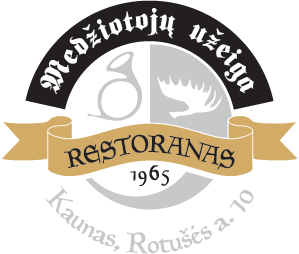
Cooking methods
ROE DEER, VENISON AND MOOSE
FRYING IN A PAN (SHORT COOKING WITH LOW FAT)
Suitable for tender, quick-cooking cuts. The best choice is roe deer and venison, whose loin and loin are extremely tender and have a delicate flavor.
Recommended thickness of the cut: 1.5–3 cm. Cooking time: 1–3 minutes per side (depending on thickness and desired doneness). Cook in a well-heated pan with a little oil or butter until the outside is browned and the inside remains juicy.
GRILLING
This is a high-temperature dry cooking method. Use small steaks for venison and venison, and for elk, choose pre-marinated cuts or softer cuts of meat.
Recommended thickness of the cut: 2–3 cm. Cooking time: 2–4 min per side (on a very hot grill). Cook on a hot grill, preferably over direct heat (over coals or a flame), until the outside is browned and the inside is juicy. For larger cuts, you can start cooking over indirect heat and finish over direct heat. After cooking, let the meat “rest” for 5–10 min to allow the juices to distribute evenly.
It is best to grill game meat to a medium level – around 56–60 °C (internal temperature).
STEAMING
This is an ideal cooking method for tougher, larger muscle cuts of meat. Braising cooks the meat at a low temperature for a longer period of time, making it tender, juicy and rich in flavor.
When braising, it is recommended to use a liquid or sauce – wine, broth, tomato puree or vegetable mixture. Meat can be cooked in the oven, on the stove or in a slow cooker. Recommended temperature: about 140–160 °C. Braising time: from 2 to 4 hours, depending on the size and type of cut.
For a “tear-off” texture, cook until the internal temperature reaches around 93°C. For a slicing consistency, 80–85°C is sufficient.
OVEN BAKING
Roasting in the oven is one of the most versatile ways to cook game. The cooking temperature and time depend on the cut of meat you choose – whether it is softer or tougher, and whether it has a bone or not. There are two main techniques used for this cooking method: quick roasting at high temperatures and long roasting at lower temperatures.
- Quick cooking (200–220 °C) This method is for small, tender cuts that cook quickly and remain juicy. Cooking time: 10–20 min (depending on thickness). Core temperature: approx. 56–60 °C (medium doneness).
- Slow cooking (150–165 °C) Perfect for larger or tougher cuts of meat, especially those with bones. This way the meat will soften over time, become juicy and acquire a rich flavour. Can be cooked in a covered dish with a little liquid, in a roasting bag or uncovered if you want a crispy crust. Cooking time: 2.5–4 hours (depending on the size and type of cut). Core temperature: approx. 85–93 °C.
SOUS-VIDE (LOW-TEMPERATURE VACUUM COOKING)
This cooking method is suitable for all lean meats and especially game. The meat is vacuum sealed and heated in a water bath for a long time at a constant, low temperature – usually 54–65 °C. This cooking method allows the meat to retain moisture and perfect tenderness.
After cooking in a vacuum, it is recommended to briefly brown the meat in a hot pan or on the grill to create a crispy crust. Cooking time: 1.5–4 hours (depending on the size of the cut)
WILD BOAR
Wild boar is a wild pig, the meat of which has a richer flavor, is slightly fattier and is especially suitable for frying, stewing or cooking in the oven. To make it not only tasty, but also safe to eat, it is important to cook it properly. The recommended internal meat temperature is at least 70 °C.
- Braising is a safe method. When braising, the meat always reaches the required temperature (often even above 90 °C).
- Baking in the oven is safe if the internal baking temperature reaches 70 °C.
Slow cooking (150–160°C) helps achieve this and avoid overcooking the meat. - Frying in a pan is safe if the internal cooking temperature reaches 70 °C. Thick steaks require longer cooking times, it is best to use a thermometer.
- Grilling is also safe, as long as the meat is fully cooked and maintains the correct temperature. Cuts that can be thinly sliced or marinated before grilling are best.
- Sous-vide – theoretically possible, but not recommended for wild boar at home.

